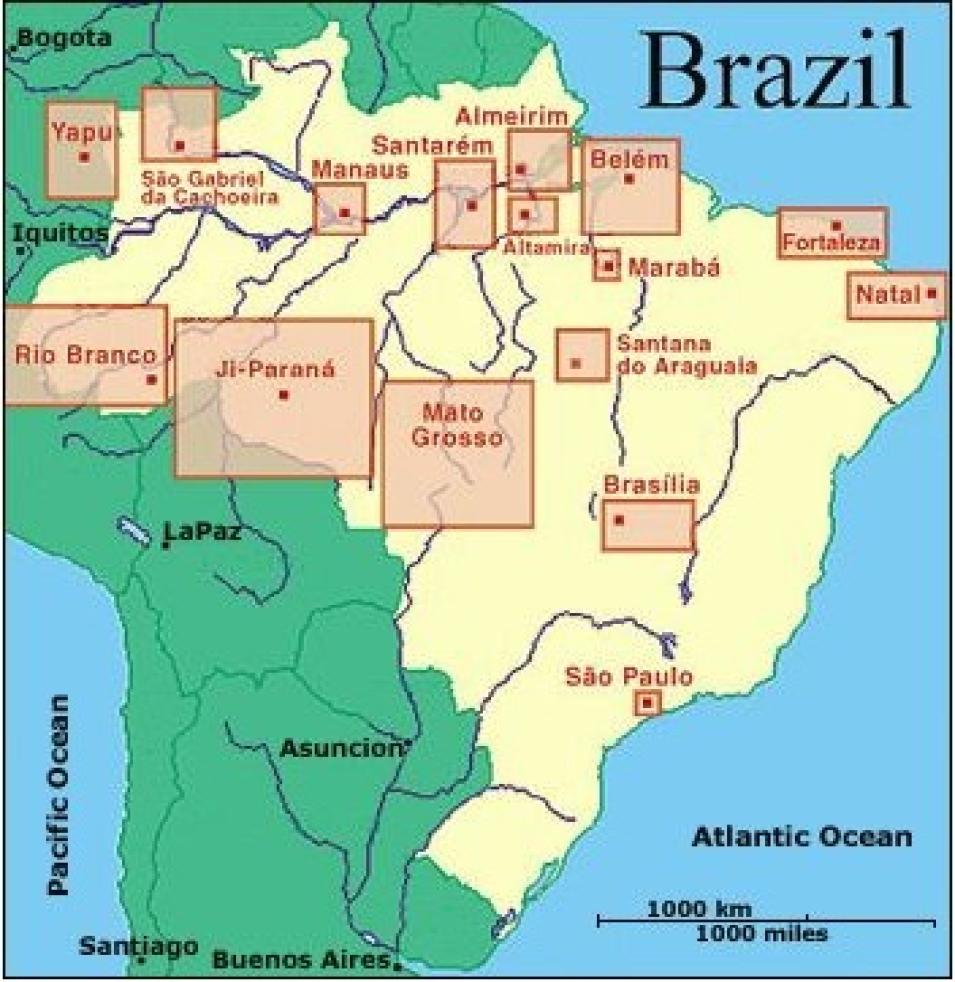The observation tower that Goulden used in his research has several instruments that measure wind direction and carbon dioxide levels in gusts of air. On a sunny day when photosynthesis conditions in the forest are optimal, updrafts of air contain less carbon dioxide than downdrafts. That difference in carbon dioxide indicates how much carbon is taken up by the forest during photosynthesis.
Goulden observed carbon dioxide exchange in a 1.5-square-mile (4-square-kilometer) plot of healthy forest near Santarem, Brazil, starting in July 2000. In September 2001, logging contractors selectively logged 1,700 acres (700 hectares) of the forest. Goulden compared carbon dioxide exchange after the logging to prior levels. He expected that logging would reduce photosynthesis in the forest because many of the leaves were removed. He also expected to see more carbon lost to the atmosphere, since logging creates dead material that is transported to the atmosphere.
But what Goulden found surprised him. For the first six to eight months after logging, the forest did lose carbon to the atmosphere, but it then recovered to the point where photosynthesis levels were back to normal. Even more surprising was that fast-growing, young trees with short life spans, such as balsa, quickly colonized the gaps created by logging. “I wouldn’t say the forest is back to what it was before, but with respect to photosynthesis, I would say it has recovered,” said Goulden.
But was this fast recovery a pure coincidence, or was it typical of forest behavior?
Alan Townsend, assistant professor with the Department of Environmental, Population, and Organismic Biology at the University of Colorado, has also studied the effect of logging on carbon exchange in the Amazon. He was not surprised by Goulden’s findings. “If the forest is not too heavily disturbed during the logging, rates of regrowth and carbon accumulation can be quite rapid following a clearing,” he said.
Both scientists agree that the method by which the forest is logged affects the status of the carbon balance, and that recovery rates are dependent on the intensity of the disturbance. So the more the soil is disturbed from logging, the slower the recovery will be.
Townsend cautions, however, that while it is exciting to see photosynthesis levels recover quickly after selective logging, the long-term implications of any forest disturbance must be considered. “The overall integrity and structure of a forest that has been selectively logged will be nothing like that of a healthy, non-disturbed forest for a very long time, especially with repeated disturbances,” said Townsend.
Townsend cited research by Daniel Nepstad, a scientist with the Woods Hole Research Center, who studies the relationship between selective logging and fire potential in forests. According to Nepstad, any type of logging, including selective logging, can change the small-scale climate of the forest such that the ground dries out and the chance for fire increases. In areas where forests were cleared for pasture, Nepstad observed several fires that started from the heat of the logging equipment. “Does that mean that every logged place is going to burn? No. But logging increases that chance, so it is worth looking at the pros and cons of selective logging,” said Townsend.


